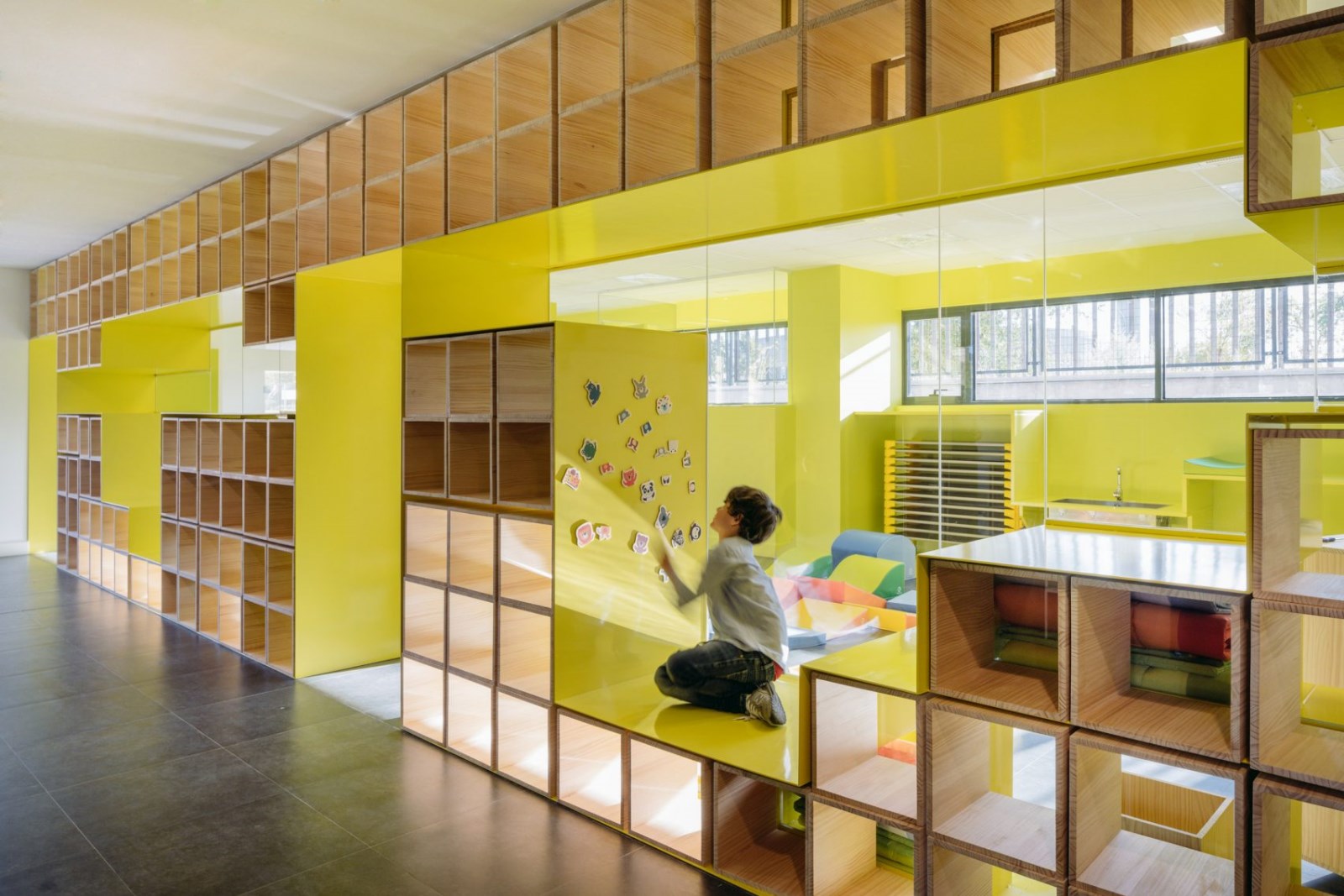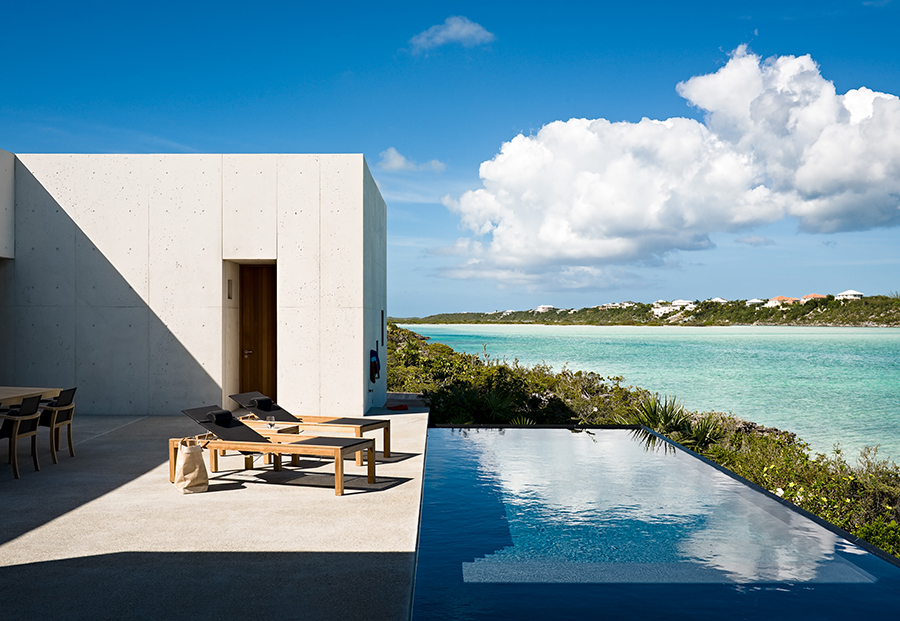Kerplunk House I STIFFEN THEE
2018-07-09 17:00
架构师提供的文本描述。科普伦克之家的目标是弥合已发现的空间和建造的空间之间的差距;不仅是一种类似自然的建筑,而且是一种自然的建筑。就像一座森林,或古老的欧洲城市,秩序的规则对使用者来说是隐藏的。尽管一种深层的组织模式确实存在,但它并不是显而易见的。房子精心设计的结构不稳定,给自己带来了一种与生俱来的原始舒适,通常只有在大自然中才能找到。
Text description provided by the architects. The Kerplunk House aims to bridge the gap between found space and built space; not just an architecture that resembles nature, but an architecture that is nature. Like a forest, or ancient European city, the rule of order is hidden from the user. Though a deep pattern of organization does exist, it is not readily apparent. The house's carefully designed structural precariousness lends itself to an innate primal comfort normally only found in nature.
这座房子是作为沙漠传播中心的第一座基础设施而建造的。随着时间的推移,沙漠植物将被种植和移植,以覆盖它的周围环境。我们为它的居民设计了一个多用途的生活和工作空间,我们用当地的材料和方法在沙漠中创造了一个微型森林。
The house was built as the first piece of infrastructure of a desert propagation center. Over time, desert flora will be planted and transplanted to cover its immediate surroundings. Designed as a multipurpose living and working space for its inhabitants, we have created a miniature forest within the desert using vernacular materials and methods.
作品由两个长方体,封闭的空间悬挂在半空中,由一系列看似随机的柱子刺穿结构的各个方向。然后在这些柱子周围和中间剪开门窗。设计的本质创造了一个高耸的居住空间,对现场的影响最小。灰泥和裸露的结构木材细节让人想起了西班牙殖民地地区的传统设计。
The work consists of two cuboid, enclosed spaces suspended in midair by a series of seemingly random posts that pierce the structure in all directions. Windows and doors are then cut out around and in between these posts. The nature of the design creates an elevated living space with minimal impact to the site. Stucco and exposed structural-wood detail recalls the traditional colonial Spanish design of the area.
通常情况下,房屋的设计是由支撑屋顶的墙壁和柱子组成的拼图。在这个项目中,我们首先构想了一个由柱子组成的森林,然后通过在它们周围建造墙壁、地板和天花板将它们锁在一起。我们想要使用共同的建筑语言,比如柱子和横梁,并将它们重新定义为自然类型,比如树干和树桩。其结果是一种综合的内外关系,其中外部支撑的偶然性反映在建筑物的内部。有了Kerplunk House,我们创造了一种新颖的生活体验,唤起了一种原始的空间感;仿佛整个森林被缩小了,塞进了一个8x8平方英尺的房间里。
Normally, a house is designed as a jigsaw plan of walls and columns that hold up a roof. With this project, we first conceived of a forest of columns and then locked them into place by building walls, floors, and ceilings around them. We wanted to take common architectural language, like columns and beams, and re-contextualize them as natural typologies, such as trunks and stumps. The result is an integrated exterior-to-interior relationship, in which the contingent nature of the exterior support is reflected on the inside of the building. With the Kerplunk House, we have created a novel living experience that evokes a primal spatial sense; as if an entire forest was shrunk and stuffed inside an 8x8 square foot room.
该设计鼓励人们与空间互动,主要是通过探索和适应。内置的低效率和未定义的空间激发了用户的自适应响应。这样,程序和使用就变成了在家里生活/工作的人的即兴表演。通过允许用户寻找和寻找与空间互动的新方法,一些看似非功能性的东西被证明具有无限的用途。展馆质疑建筑的本质,并暗示建筑师的首要角色可能是为人们创造空间。
The design encourages people to interact with the space primarily through exploration and adaptation. Built-in inefficiencies and undefined spaces incite an adaptive response from the user. This way, program and use become an improvisation of the people living/working in the house. By allowing users to seek out and find new ways of interacting with the space, something that appears non-functional is shown to have infinite uses. The pavilion questions the very nature of architecture and suggests that perhaps the primary role of the architect is to create spaces for people to find.
 举报
举报
别默默的看了,快登录帮我评论一下吧!:)
注册
登录
更多评论
相关文章
-

描边风设计中,最容易犯的8种问题分析
2018年走过了四分之一,LOGO设计趋势也清晰了LOGO设计
-

描边风设计中,最容易犯的8种问题分析
2018年走过了四分之一,LOGO设计趋势也清晰了LOGO设计
-

描边风设计中,最容易犯的8种问题分析
2018年走过了四分之一,LOGO设计趋势也清晰了LOGO设计



















































































